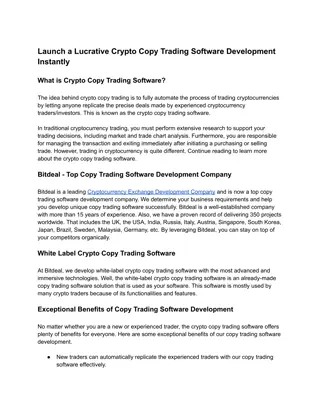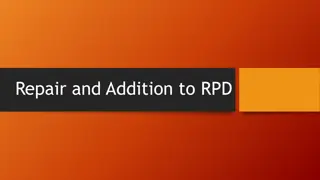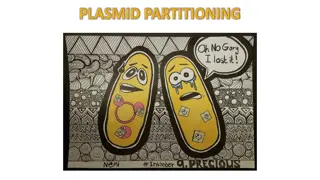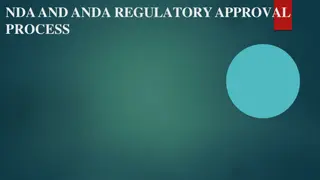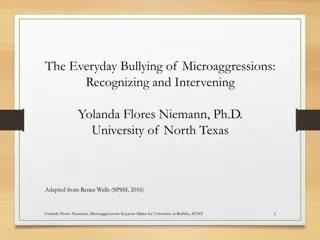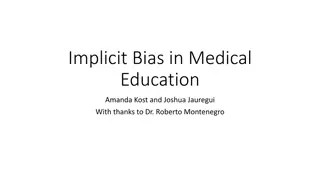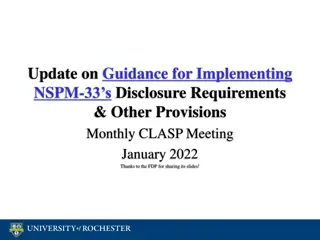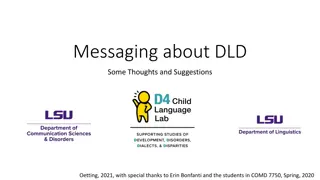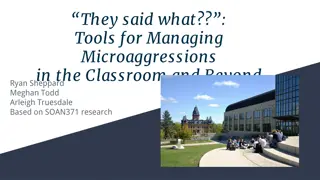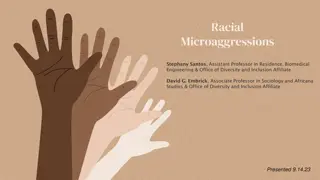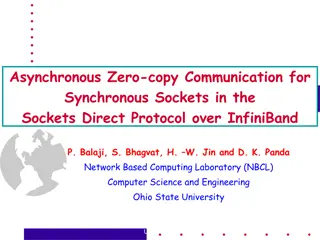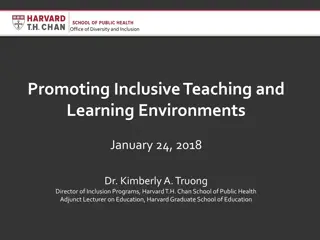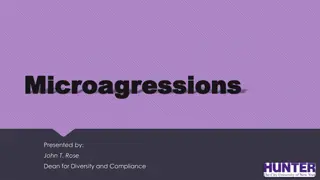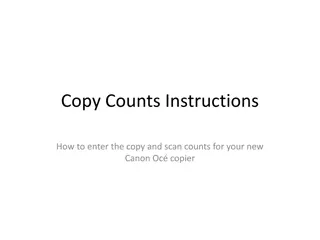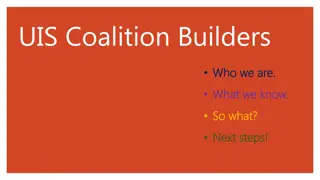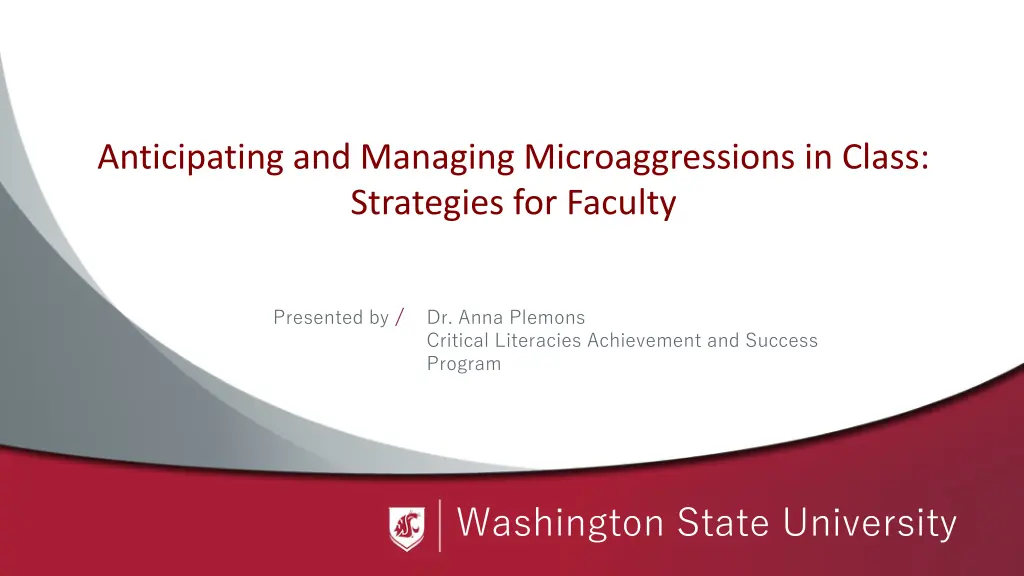
Strategies for Anticipating and Managing Microaggressions in Class
Explore strategies for faculty to anticipate and manage microaggressions in the classroom, defined as behaviors or statements that may cause insult or injury unintentionally. Learn about the importance of creating an empathetic and socially just environment on college campuses, enhancing diversity and promoting nuanced perspectives. Discover the role of teachers in mitigating microaggressions and the significance of addressing unconscious biases in educational settings.
Download Presentation

Please find below an Image/Link to download the presentation.
The content on the website is provided AS IS for your information and personal use only. It may not be sold, licensed, or shared on other websites without obtaining consent from the author. If you encounter any issues during the download, it is possible that the publisher has removed the file from their server.
You are allowed to download the files provided on this website for personal or commercial use, subject to the condition that they are used lawfully. All files are the property of their respective owners.
The content on the website is provided AS IS for your information and personal use only. It may not be sold, licensed, or shared on other websites without obtaining consent from the author.
E N D
Presentation Transcript
Anticipating and Managing Microaggressions in Class: Strategies for Faculty Presented by / Dr. Anna Plemons Critical Literacies Achievement and Success Program Washington State University
Microaggressions defined: behaviors or statements that do not necessarily reflect malicious intent but which nevertheless can inflict insult or injury --Simba Runyowa (2015)
What these critics miss is that the striving for PC culture on college campuses is actually rooted in empathy. The basic tenets of this culture are predicated on the powerful impulse to usher both justice and humanity into everyday social transactions. Given the visible (albeit slow) rise in diversity on campuses, the lexicon of social justice invites students to engage with difference in more intelligent and nuanced ways, and to train their minds to entertain more complex views of the world. --Simba Runyowa (2015)
Buzzfeed article, 21 Racial Microaggressions You Hear On A Daily Basis by Heben Nigatu (2013)
What is the role of the the teacher regarding microaggressions? In my role as parent or coach, I can work one-on-one with kids to help them become resilient. In my role as teacher, my responsibilities shift to manage the learning environment. So, whereas I might share the following Warren Buffett quote with my kid or with a friend, it does not diminish my responsibilities to mitigate microaggressions in my classroom.
And sometimes the teachers with the best intentions are themselves the enactors of microaggressions, as is seen in the following local example.
Espina Velasco, Tabitha. 2017. A Pacific Pilipina in the Ocean of Palouse. Asian Studies: Journal of Critical Perspectives on Asia. 53(1).
Small Group Work, Part 1 Group 1 Task: Develop a list of best practices for avoiding microaggressions against your students in class discussions/Q&A situations/office hours (basically anytime you are on the job but off script ) Group 2 Task: Develop a list of best practices for mitigating microaggressions between students in class.
Small Group Work, Part 2 PART 2: Revise (without obscuring meaning), complicate, and/or add to the best practices generated by the other group
In closing If your homework was to build your own best practices, what would you keep from our group work?


